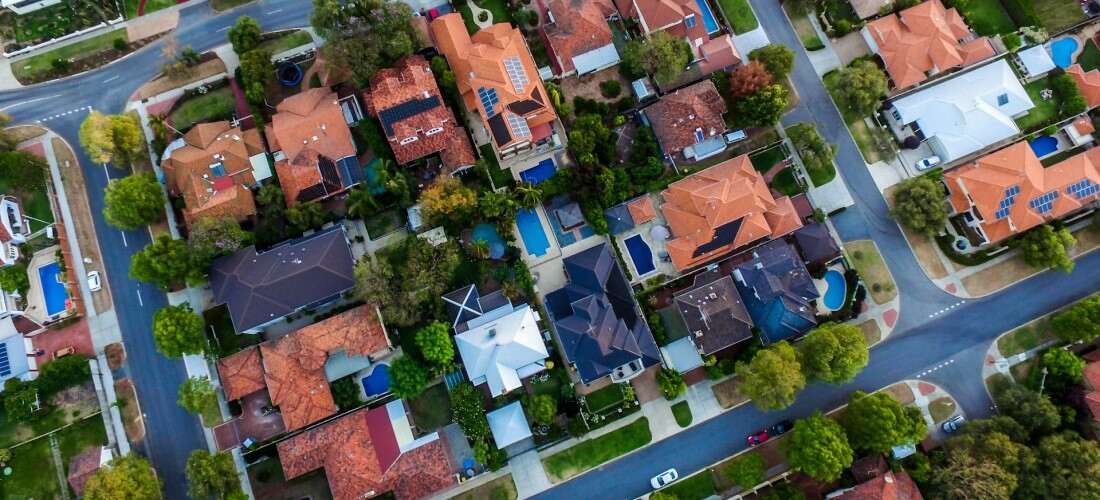
January economic update: Issues to watch in 2024
Key points
- The 2024 economy will be a tale of two halves, with the second half of the year looking better.
- The global economy could be the big risk in 2024.
- Inflation has declined quickly recently. From here it will be a slower drop.
- Geopolitical risk is on the rise, with the US election to get many of the headlines.
The economy in 2024 – a tale of two halves
The economy in the second half of 2023 ran at a sub-trend pace. The most significant driver was the weakness of ‘real’ household disposable incomes (i.e., after allowing for the impact of inflation). The factors slowing the economy in 2023 are still prevalent as we enter 2024.
Further, population growth will almost certainly be lower this year. The global economy looks like it is taking a (modest) step down. Residential construction activity could be weaker.

GDP growth took a step down in the second half of 2023

Building cost inflation has slowed down significantly, but hasn't declined.
The good news for the Australian economy in 2024
The Aussie economy is likely to end the year in a better state than it started:
- Fiscal policy will be more supportive this financial year (and even more so in 2024-25). News reports suggest that the government may provide further cost-of-living assistance.
- Disposable income growth in households will turn positive in the second half of this year. Some of this additional cash flow will be saved. But rising wealth should mean that at least some will be spent.
- There is a large amount of building and engineering work still in the pipeline (roads, rail, green transition). High capacity utilisation puts a floor under capital spending. El Nino has not been as bad as feared (although partly offset by the severe flooding in some regions).
What are the risks for our economy this year?
It is possible that increased wealth, a strong jobs market, and catch-up spending will see consumer spending in a better state than what I am projecting. This would be even more likely if interest rates are cut earlier, or fiscal policy is more supportive.
The big negative risk is the global economy. The European economy is verging on recession. There are signs that the US consumer is starting to feel the pinch. The Chinese Government added economic support in 2023 without any notable pickup of economic activity, and they’re likely to provide further fiscal and monetary support in the year ahead.
Perhaps the biggest risk is: If fiscal and monetary policy support is more limited than expected. The most likely reason would be 2024’s inflation outlook.

The household savings rate is low in Australia by peer country standards.

There is a large amount of construction work still in the pipeline for Australia.

The mismatch between the demand and supply of workers has been reduced, but is still high.
Inflation has been on a rapid decline, but 2024 will be a slower fall
Inflation declined sharply in 2023. Demand slowed given the crunch to household disposable incomes and the end of revenge spending. Supply has risen reflecting improved worker availability and the end to global supply-chain snarls (despite the recent problems in the Red Sea).
These factors are still providing a downward push to inflation. Lower oil and gas prices will help, and it looks like there will be no big rise in electricity prices. A stronger AUD is another plus. Increasing affordability worries means rent growth will likely be lower.
The major concern is that wage growth isn’t likely to slow much. This has led many central banks to worry that the final journey back to their inflation targets might be the hardest.
Inflation stickiness is happening here, and around the world
There have been signs of inflation ‘stickiness’. Real-time benchmarks point to a headline inflation rate stuck between 3.5 – 4.5 per cent for the past six months. Similar inflation stickiness is evident in the US and Canada. I think this is delaying, not stopping, the moderation of inflation. Firms indicate that the prices they are receiving are still above their long-term average but are not unusually high.
Another concern is that the extended period of higher inflation has made firms more comfortable in raising prices – with consumers ready to pay. But surveys of consumer inflation expectations indicate that they have fallen back to near their long-term average. Worries about rising inflation expectations are inconsistent with reports of widespread discounting.
Inflation over the past year has come down via the elevator, reflecting big changes in supply and demand. The elevator ride is near its end. From here, the downward path of inflation will be by the stairs.

The decline of inflation has moderated in recent months.
Geopolitical tensions pose a risk to the economy
The relationship between geopolitical risk and the economy is mixed. Geopolitical tensions were a lot higher in the 1950s and 60s than they have been over the past couple of decades (at least until recently). But that was also a period when economic growth was substantially stronger.
Tensions between the US and China will be felt globally
The most significant geopolitical issue over the past five years has been the increase in tensions between the US and China. It is not in either country’s interest to ramp up tensions. The Chinese Government is struggling to get its economy back up to full speed, while the US economy is struggling to get inflation down.
The consensus view is that the breakdown of economic relations between the US and China is a negative for the global economy. The rush to boost domestic manufacturing capacity provides a stimulus to the economy – at the cost of reducing efficiency and increasing government debt.
The US election outcome could see big changes ahead
The geopolitical issue that will get the most coverage this year will almost certainly be the US election. At this early stage, Joe Biden is the strong favourite to be the Democrat nominee, and Donald Trump the Republican. At time of writing, Trump was modestly ahead of Biden in the nationwide voting although the more critical measure is the state-by-state voting patterns, particularly ‘swing’ states such as Georgia and Wisconsin. There is still plenty of time for movement in the polls. The possibility of other candidates being on the ballot complicates the analysis (e.g. if Robert Kennedy Junior runs, it will likely reduce the chances of a Biden victory).

The polling for Donald Trump's re-election in 2024 has recently improved.

US Government debt is high and forecast to go higher.
Fiscal policy will probably remain supportive, albeit less so than it has been over recent years. This will mean ongoing increases in US Government debt, an issue that one day could be significant but unlikely to be over the next 3 – 5 years.
A Trump election win could lead to big changes in defence and trade policy, as well as making it more difficult to reach a climate change agreement. Federal Reserve Chairman Powell’s term ends in May 2026, and it’s unlikely a President Trump would reappoint him. His replacement could have major financial market implications, although any candidate would need to be confirmed by the Senate.
A President Trump’s ability to make big changes will be dependent upon how well the Republicans do in Congressional elections. At the time of writing, the Republicans are modestly favoured to win both the House of Representatives and the Senate. If Trump did win, the constitution limits him to one more term.
We really do live in interesting times.


